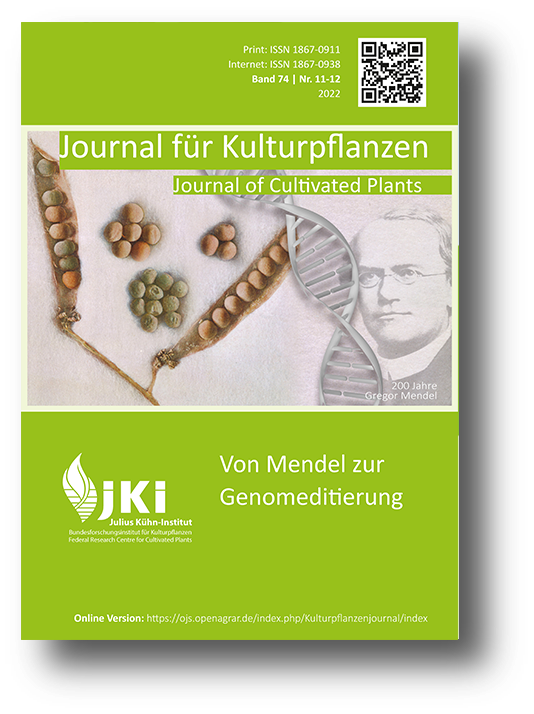The impact of Mendelian genetics on the breeding of apple and sweet cherry
DOI:
https://doi.org/10.5073/JfK.2022.11-12.04Keywords:
Mendel, fruit breeding, Malus domestica, Prunus avium, monogenic, markerAbstract
The influence of Mendel on modern fruit breeding is undeniable. The inheritance rules he established have enabled breeders to design breeding programmes in a targeted manner to make predictions about possible success and to select offspring with improved trait combinations using molecular genetic markers in a cost-effective and efficient way. Using the example of the apple and the sweet cherry as representatives of pome and stone fruit, we highlight selected Mendelian traits that are of particular importance for breeding. In addition, the current status of molecular markers and genetic maps and their enormous influence in efficient fruit breeding are presented. However, molecular marker progress would not have been possible without Mendel's insights. In apples, the most important native fruit species, there is a large number of economically interesting Mendelian traits some of which are easy to phenotype. For example, columnar growth, red flesh colour, cold requirement for breaking winter bud dormancy, seedlessness of the fruits and double flowers for cultivation as an ornamental tree and resistance to scab and powdery mildew. Other traits, such as resistance to insects, and the bacterial disease fire blight and various storage diseases are not as straightforward to phenotype. This also applies to red colouration of the fruit skin. Nevertheless, in both situations, molecular markers are indispensable for successful breeding. This also applies to sweet cherries. In addition to self-fertility, powdery mildew resistance and fruit skin colour are among the Mendelian traits with economic significance in sweet cherry breeding.
Downloads
Published
Issue
Section
License
Copyright (c) 2022 Henryk Flachowsky, Ofere Francis Emeriewen, Mirko Schuster, Andreas Peil, Janne Lempe, Thomas Wöhner

This work is licensed under a Creative Commons Attribution 4.0 International License.
The content of the journal is licensed under the Creative Commons Attribution 4.0 License. Any user is free to share and adapt (remix, transform, build upon) the content as long as the original publication is attributed (authors, title, year, journal, issue, pages).
The copyright of the published work remains with the authors. The authors grant the Journal of Cultivated Plants, the Julius Kühn-Institut and the OpenAgrar repository the non-exclusive right to distribute and exploit the work.







